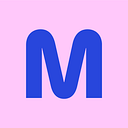Member-only story
My Secret Weapon for Design Inspiration
The muse is almost never there when you need it, so take a systematic approach
 Inspiration is a key component of visual design. It’s a reference point that kick-starts the creative process and a starting point for producing beautiful, visually pleasing solutions in response to a well-defined problem. But honestly, how to summon inspiration is a total mystery to me.
Inspiration is a key component of visual design. It’s a reference point that kick-starts the creative process and a starting point for producing beautiful, visually pleasing solutions in response to a well-defined problem. But honestly, how to summon inspiration is a total mystery to me.
It’s a fleeting, rarely spontaneous feeling, and it’s almost never there when I need it. Yet as an industry we tend to talk about inspiration as if it comes easy — like a natural talent that good designers possess and a weakness that bad designers need to overcome. But if you’re anything like me, finding inspiration is something that takes considerable work.
Despite having been paid to design for over 15 years, I’m not someone who wakes up feeling naturally inspired; I wish I were, but that’s simply not the case. The reality is that each time I’m required to pull together a visual concept, I almost certainly spend the first portion of the day totally and utterly lost for ideas. This is the exact moment I need inspiration to strike—and the point when frantically clicking through Dribbble or looking to the sky for divine intervention only makes matters worse.
So I’ve found a better way.
Inspiration as a physical resource
This is my little secret; the one thing I can’t design without. For me, inspiration comes from browsing images I have saved on my computer and categorized using an app (I use the amazing Pixave, but Google Photos or Pinterest work well, too). These are images that I’ve been storing for over 10 years that sit quietly in their thousands waiting for their time to shine.
For me, inspiration doesn’t strike at the most opportune moments, so whenever I come across something beautiful, I’ll add it to the pile, categorize it (by type of image, color, visual device, etc.) and forget about it.
On the face of it, that doesn’t sound like a particularly valuable resource for…

